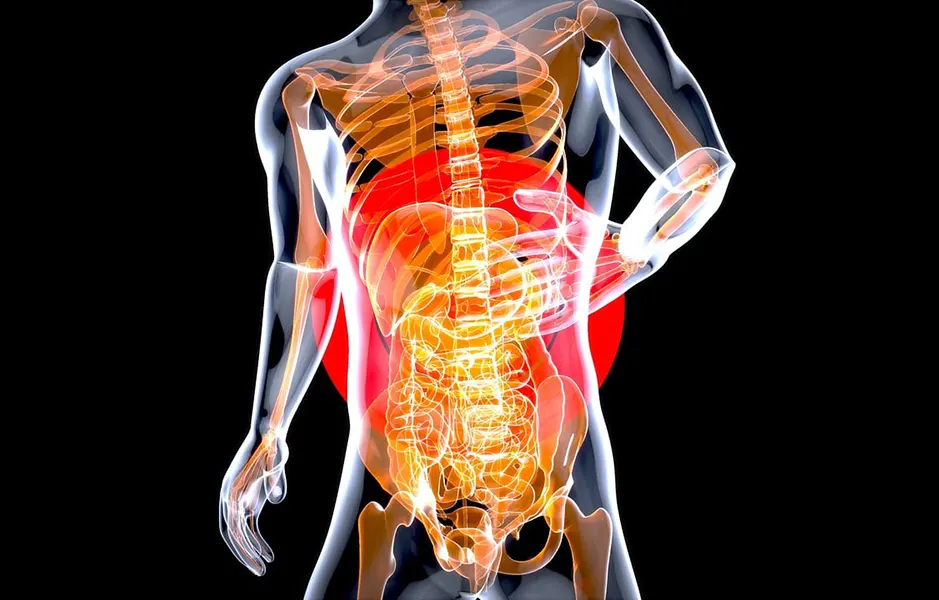Inflammatory Bowel Disease (IBD) encompasses disorders characterized by chronic inflammation of the digestive tract, including Crohn’s disease and ulcerative colitis. Symptoms may include abdominal pain, diarrhea, weight loss, and fatigue.
IBD is generally classified as an autoimmune disorder. It involves an abnormal immune response where the immune system mistakenly attacks the body’s own digestive tract, leading to chronic inflammation and tissue damage.
There’s a general plan outlined on our other article on dealing with auto-immune conditions : https://chronicsoul.com/2024/03/21/auto-immune-brief-overview/
Diagnosing conditions like IBD can be challenging due to the variability of symptoms and the need for invasive diagnostic procedures such as colonoscopy and biopsy. It often takes several months to years for individuals to receive a definitive diagnosis as doctors may initially explore other possible causes for their symptoms before considering IBD.
Ulcerative colitis primarily affects the colon and rectum, leading to continuous inflammation and ulceration of the innermost lining of the colon.
During colonoscopy, inflammation and ulceration of the colon lining, characteristic of ulcerative colitis, are usually visible, but in some cases, the extent or severity of inflammation may be mild or localized, making it challenging to distinguish from other conditions or even normal variations. Additionally, blood tests for markers of inflammation, such as C-reactive protein (CRP) or erythrocyte sedimentation rate (ESR), may be normal in individuals with ulcerative colitis, especially during periods of remission.
In contrast, Crohn’s disease can affect any part of the digestive tract from the mouth to the anus, causing inflammation that can penetrate deeper layers of the intestinal wall and involve patches of healthy tissue, leading to complications such as strictures and fistulas.
Crohn’s disease can sometimes be challenging to diagnose definitively using colonoscopy and blood tests alone. In some cases, inflammation and characteristic changes in the intestinal lining associated with Crohn’s disease may not be visible during a colonoscopy, especially if the disease primarily affects deeper layers of the intestinal wall. Additionally, blood tests may not always show specific markers indicative of Crohn’s disease, particularly during periods of remission or in individuals with atypical presentations.
While both conditions share some symptoms such as abdominal pain, diarrhea, and weight loss, their specific patterns of inflammation, affected areas of the digestive tract, and associated complications distinguish them clinically.
As of recent estimates, it’s believed that around 6 to 8 million people worldwide suffer from IBD.
The exact cause of IBD is not fully understood, but it is believed to result from a complex interaction between genetic predisposition, environmental factors, and dysregulation of the immune system.
Some theories suggest that modern dietary habits, which may include increased consumption of processed foods and certain inflammatory components like gluten, could contribute to the rising prevalence of IBD.
Certain genetic variations may make individuals more susceptible to IBD, while environmental factors such as diet, smoking, and microbial composition in the gut can trigger or exacerbate inflammation in susceptible individuals. Dysfunctions in the immune response lead to an inappropriate attack on the intestinal lining, causing chronic inflammation characteristic of IBD.
Long-term complications of IBD can include severe damage to the digestive tract, increased risk of colon cancer, nutritional deficiencies due to malabsorption, and complications such as strictures, fistulas, or abscesses, which may require surgical intervention to manage or alleviate symptoms.
Additionally, chronic inflammation associated with IBD can impact overall quality of life, leading to persistent discomfort, fatigue, and psychological distress.
Leaky gut, also known as increased intestinal permeability, is a condition where the lining of the intestines becomes more porous, allowing substances such as toxins, bacteria, and undigested food particles to leak into the bloodstream. While some research suggests that increased intestinal permeability may be associated with IBD, it is not considered a defining component of these conditions. Rather, it may contribute to the inflammation and immune dysregulation characteristic of IBD by allowing harmful substances to cross the intestinal barrier and trigger immune responses. While changes in intestinal permeability are recognized scientifically in conditions like IBD, the term “leaky gut” is colloquial and its clinical significance and role in disease pathology remain the subject of debate.
The concept of leaky gut is often discussed in alternative medicine circles where miracle cures are promised and treatments are oversold. Some people’s aim is to exploit patient desperation by offering seemingly simple explanations and treatments for complex health conditions. By using buzzwords and promising cures where conventional medicine may fall short, alternative practitioners may draw in vulnerable individuals seeking relief, despite lacking robust scientific evidence to support their claims.
However it is possible through various treatments, medication, dietary changes, lifestyle modifications and sometimes surgery to experience periods of remission from IBD, symptoms can be greatly improved or even disappear entirely. So the prognosis isn’t utterly terrible, but it is still a very difficult illness to deal with and solve.
In recent years though, the awareness and understanding of IBD has increased significantly, leading to improved recognition and support for individuals living with these conditions.
Unfortunately, societal attitudes toward IBD can still vary, and there may be misconceptions or stigma associated with the conditions, particularly due to the sensitive nature of gastrointestinal symptoms.
Discrimination against individuals with IBD who do not appear visibly ill stems from misconceptions surrounding invisible illnesses. Despite experiencing debilitating symptoms such as chronic pain and fatigue, those with IBD may not exhibit outward signs of illness, leading to scepticism or dismissal of their condition by others.
Ultimately it’s about education and awareness of these conditions, because historically there hasn’t been widespread attempts at delivering the material in media and education to the general population.









